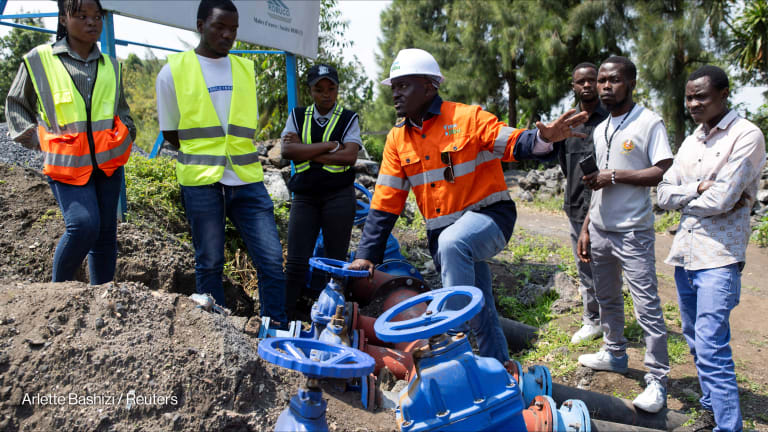
The House may have passed a bipartisan budget agreement, but the real work — and lobbying — begins now to preserve or expand programs across the U.S. government, including those in international development.
The proposal approved on Thursday by lawmakers in the lower congressional chamber now heads to the Senate; if it becomes law, it would be the first one in years. The question for U.S. aid implementers and partners: How would the money be spent? Other industries vie for the same scarce resources.
Development industry leaders gathered on Thursday night at the annual U.S. Global Leadership Coalition tribute dinner in Washington, D.C. this year to honor Vice President Biden and Reps. Kay Granger and Nita M. Lowey, a Republican and a Democrat who as chairwomen of the House Appropriations Subcommittee on State and Foreign Operations have for years held the purse strings for the so-called 150 account, which covers U.S. foreign affairs spending.
The seasoned lawmakers gave U.S. aid implementers — those companies, nonprofits and consultants delivering assistance by the American people — some advice on how to convince lawmakers to fund development cooperation:
Kay Granger, who currently chairs the subcommittee as well as the Iraqi Women’s Caucus, said she tends to drop two names: Israel, our “greatest ally,”or Mexico, the southern neighbor.
Lowey, a strong supporter of education and women’s programs, explained that it’s the right thing to do, and it’s in our national security interest.
Both cited former Secretary of Defense Robert Gates’ argument — often repeated by the Obama administration — that development assistance was less expensive than defense spending.
Granger applauded Rajiv Shah, the U.S. Agency for International Development administrator who was in attendance. Biden, too, praised the 40-year-old as “one hell of an effective guy” who “wants to know practically how to get things done.”
Biden told USGLC members — representatives of companies eager to do business abroad with the U.S. government — that the world was at an “inflection point” and there was a chance, “for the first time in my lifetime, to make hope and history rhyme,” a phrase borrowed from the Irish poet Seamus Heaney.
He promised the aid community that the United States would push for an “ambitious” post-2015 development agenda, and said he envisioned North America, in ten years, to be the “energy epicenter of the world.”
Be that as it may, the hard work begins now for administration staff to divvy up spending and decide how much money USAID, the Millennium Challenge Corp. and other aid initiatives will receive. Their implementing partners will be watching closely.
Read more on U.S. aid reform online, and subscribe to The Development Newswire to receive top international development headlines from the world’s leading donors, news sources and opinion leaders — emailed to you FREE every business day.








